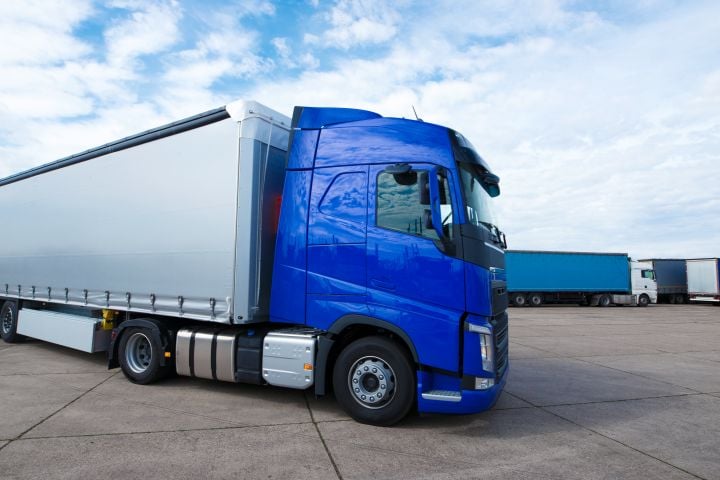Diesel particulate filters (DPF) collect ash from the motor oil and soot from the exhaust. The majority of soot is burned off during a truck’s operation but ash remains in the honeycomb substrate of the filter, which you must clean during routine maintenance.

The exhaust is not hot enough
Highway vehicles’ exhaust is often hot enough to burn off most soot through a process known as “passive regeneration.” On the other hand, cars that idle a lot or engage in stop-and-go traffic do not heat their exhaust sufficiently.
The latter needs to “actively” burn off the soot from the substrate by either putting in an electric heater while parked or adding more fuel slightly upstream of an oxygen catalyst.
Clogging can happen
When your car doesn’t burn off the soot, ash builds up in the DPF over time. It gradually fills up a significant amount of the filter volume, filling the filter channels and often sealing the ends.
As a result, there is less room for soot to build up, less gas passing through the filter media and less obstruction in the exhaust system.
Because of this constraint, the engine has to inject more gasoline to get the same output. It also must run through more fuel-intensive regeneration cycles. Most people report an increase in fuel consumption of up to 10%.
When there is severe ash blockage, the ash serves as the primary substrate for filtration. The ash effectively insulates the emission-reducing catalyst that coats the ceramic tubes if the DPF is of the “catalyzing” type, which prevents it from performing as intended.
How often should you clean your DPF?
The frequency of DPF ash removal varies based on the type of DPF and the engine your car is running. While a lightly-loaded, stop-start vehicle may have a clogged DPF in as low as 90,000 kilometers, long-haul trucks working at high engine loads might only require DPF ash cleaning at 600,000 kilometers or more.
The most effective method for removing ash from a DPF is through authorized off-vehicle licensing procedures run by specialized DPF cleaning businesses with equipment purchased from DPF Parts Direct. After removing the DPF, you should transport it to these businesses to be cleaned.
There are many ways to clean the DPF.
The most common way of cleaning the DPF is the “bake and blow” technique, also known as thermal cleaning. The process entails forcing the ash out of the DPF filter with compressed air after baking it in an oven to oxidize any leftover soot.
There is also the “aqueous” method of cleaning that involves the application of a surfactant to envelop the ash particles and facilitate the removal of the ash from the DPF substrate through water flow. After that, the DPF is dried in a dedicated drying chamber.
Other cleaning techniques include the use of ultrasonics, in which the DPF is submerged in a water tank heated to a high temperature, causing ultrasonically created micro-bubbles to combine with high pressure to remove ash and soot.
While this method works, the filter can easily be harmed by the produced vibrations, so you should be ultra-cautious about it. Preventing any cleaning business using this technique would be even better.
How does the DPF cleaning process go about?
After removing the DPF from your vehicle and taking it for cleaning, the cleaning company will weigh it. The companies do this regardless of the cleaning technique they use.
In addition to proving how much residue is eliminated throughout the cleaning process, weighing helps the companies know the amount of ash that might have buildup in the DPF.
The DPF company then inspects the DPF for any evident mechanical damage that would render it inoperable. They also inspect the casing internally with a probe light and verify whether it’s intact using a meter.
Rather than waste time trying to get a small probe inside, some cleaning businesses specializing in small DPFs cut the casing open to inspect the substrate.
Inspection may show that the DPF core is irreversibly blocked, melted, or cracked due to improper engine maintenance or disregarded DPF warning signals.
Following one of the methods above, a reusable DPF is cleaned in preparation for a final inspection, flow-rate testing, and clean weight measurement.
Can you clean the DPF by yourself?
Besides the above cleaning methods, many other on-vehicle DPF cleaning methods are available. Even this being the case, many big businesses don’t undertake them because of the risks they carry on the health and the environment.
There are dozens of DPF cleaning products available on the market, which you can apply directly to the DPF or add to the fuel tank. So, if you are wondering whether you can clean the DPF by yourself, yes, you can do it, but the results aren’t as great.
When handling these substances, exercise extreme caution, as some are poisonous. It would also help to dispose of the waste materials from the DPF clean-out with the same caution as any other hazardous material.
These chemicals all make the same claims about eliminating built-up soot, but none eliminate ash accumulation. This means spray-in chemicals and fuel tank additives won’t remove ash from your DPF.
If you don’t want to spend money taking your filter to a professional cleaner, keep your engine in good condition so it can perform regen as necessary. This way, you won’t have excessive soot buildup in your DPF.
Using the proper oil for your engine to guarantee it creates the fewest particles possible is a surefire approach to maximize DPF life. So, be ultra-cautious about the oil you put in your engine.
You also should regularly inspect your engine and fix any issues it might be having. You should note that an EGR valve that is malfunctioning or blocked may stay open for extended periods, which increases the quantity of soot that is fed back into the engine and the DPF.
During the inspection, you should remove the valve and replace it with a new one.
We hope you found this blog post on DFP Cleaning: A Vital Part Of Maintaining Your Diesel Vehicle, useful. Be sure to check out our post on States Requiring Trip Permits For Trucks for more great tips!
Have Experience in the Moving Industry? Want an Additional Income Stream? Work With All Around Moving!
Possessing experience in the shipping industry, and or moving, and are looking for additional Income stream opportunity? Read what All Around Moving has to offer to you!
The Work With Us program, it affords experienced moving consultants with the special opportunity to develop their moving consultant business from anywhere, any city in the U.S.A.
We will provide you with a complete set-up to run your business. To learn more, click here.





